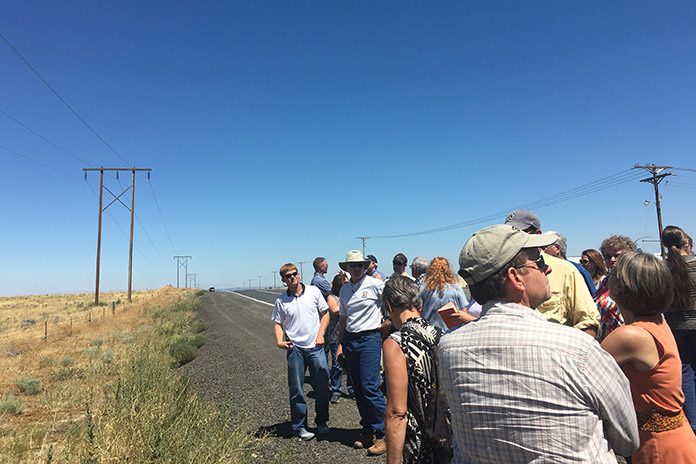
By U.S. Rep. Greg Walden

In the coming months, Congress will take up the issue of climate change and how best to adapt America’s policies to reduce greenhouse gas emissions. Let me be clear: climate change is real.
To cope with the change, we need thoughtful solutions that rely on innovation, conservation, and preparedness.
We need to reduce emissions while protecting the interests of the American people, our communities, and our economic well-being, too. And we need to make sure our communities – especially coastal areas – are ready to cope with the changes we know are coming.
In Oregon, we can be a model for common sense improvements to modernize the way we manage our environment, power our communities and tap into the abundance of renewable energy in our state.
Any conversation about climate change must include the need to improve forest management.
Wildfires charred more than 800,000 acres of land in Oregon in 2018, sending untold pollutants into the atmosphere and into our lungs.
A comparable wildfire season in California emitted 68 million tons of carbon dioxide into the atmosphere – the equivalent of one year of emissions from electricity generation in that state.
In Central Oregon, Cycle Oregon was canceled for the first time in history because of wildfire smoke in 2017, and Oregonians are held hostage in their homes each summer because of wildfires that burn across our poorly managed forests and fill our skies with ash.
Better managing our forests reduces the risk of these catastrophic fires and the toxic emissions they put into the atmosphere.
A Nature Conservancy and Forest Service study found that active management of fire fuels can reduce the size and intensity of wildfires by up to 70 percent, and can reduce carbon emissions of wildfires by up to 85 percent. Congress needs to follow the science on forest management.
We also need to find innovative ways to tap into the abundance of hydropower in Oregon — which generates 40 percent of the electricity in our state.
I helped enact a new law in the last Congress that streamlines the permitting process for hydropower projects like Central Oregon Irrigation District’s Juniper Ridge hydropower project, which turns piped irrigation water into enough power for 3,300 homes. This technology also conserves water for farmers and fish – all carbon free.
A Department of Energy report found that U.S. hydropower could increase by nearly 50 percent by 2050 with new technology and innovation like we are developing here in Oregon.
We also need to devote more resources to the work our national laboratories – such as the Pacific Northwest National Lab in Washington state’s Tri-Cities – are doing to develop grid-scale battery storage.
A first-of-its-kind battery storage project underway in Eastern Oregon will help make renewable sources more viable and Oregon’s electricity grid more reliable.
Portland General Electric has teamed up with NextEra on the Wheatridge Renewable Energy facility that combines wind and solar energy production with one the largest battery storage facilities in the country.
This project will help replace some of the baseload power lost from the phase out of PGE’s coal-fired plant near Boardman.
In addition, any serious efforts to reduce emissions from energy production must include new, safe and small modular nuclear power, like that being developed by NuScale in Oregon.
Nuclear power is emissions-free, and the technology being designed by NuScale can help communities transition from coal to cleaner energy sources.
Just as America led the world in energy development that has reduced carbon emissions to 1992 levels, we want American innovators to develop breakthrough technologies that will improve the environment and create jobs right here at home.
Then we can help other countries reduce their emissions using American technologies and products. We know that the worldwide energy demand is set to grow by about 27 percent by 2040, so we should act now to power up American energy innovation to help reduce global emissions in the coming years. There is broad bipartisan agreement that prudent, practical steps should be taken to address current and future climate risks. It is time for Congress to work on them together.









